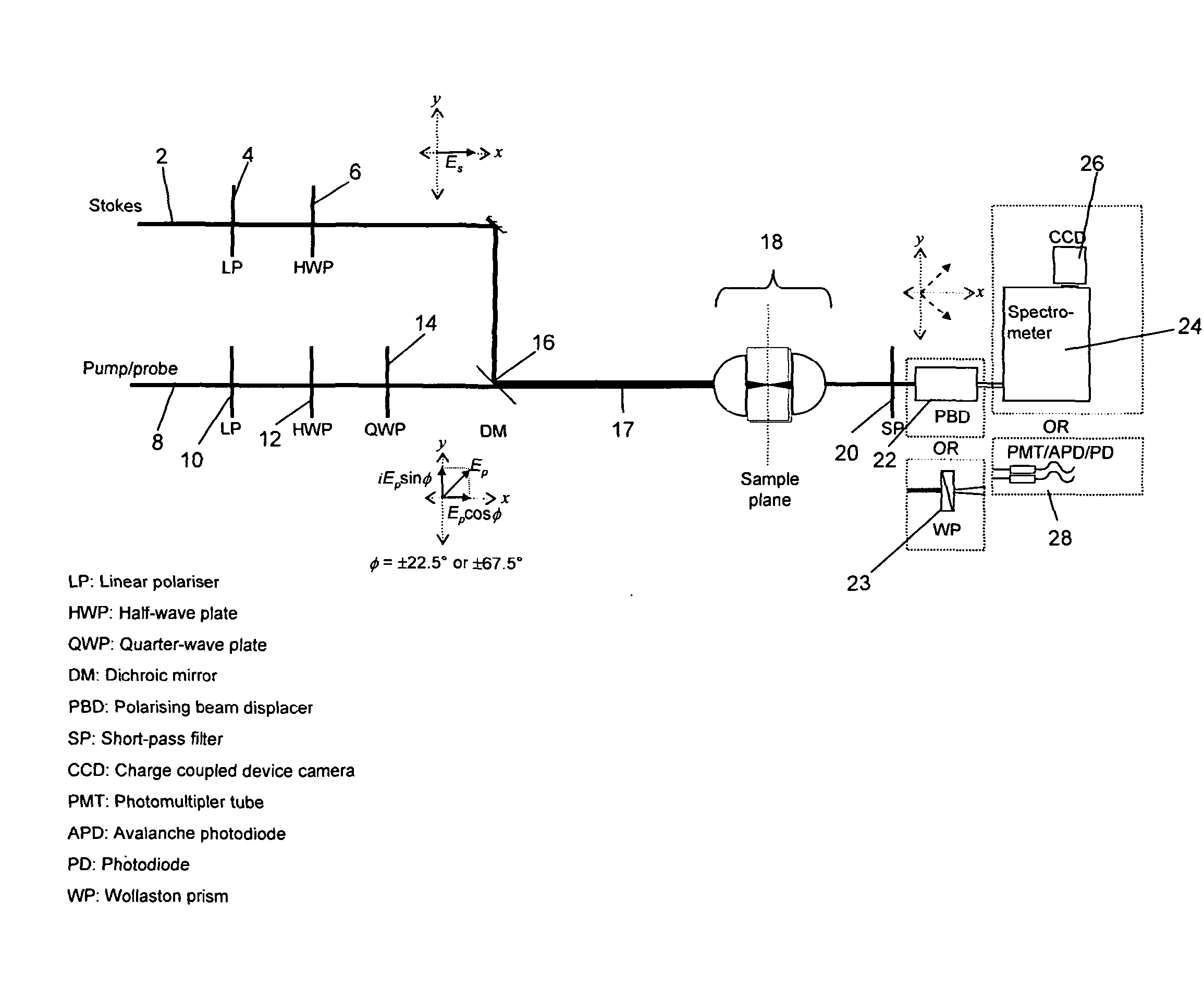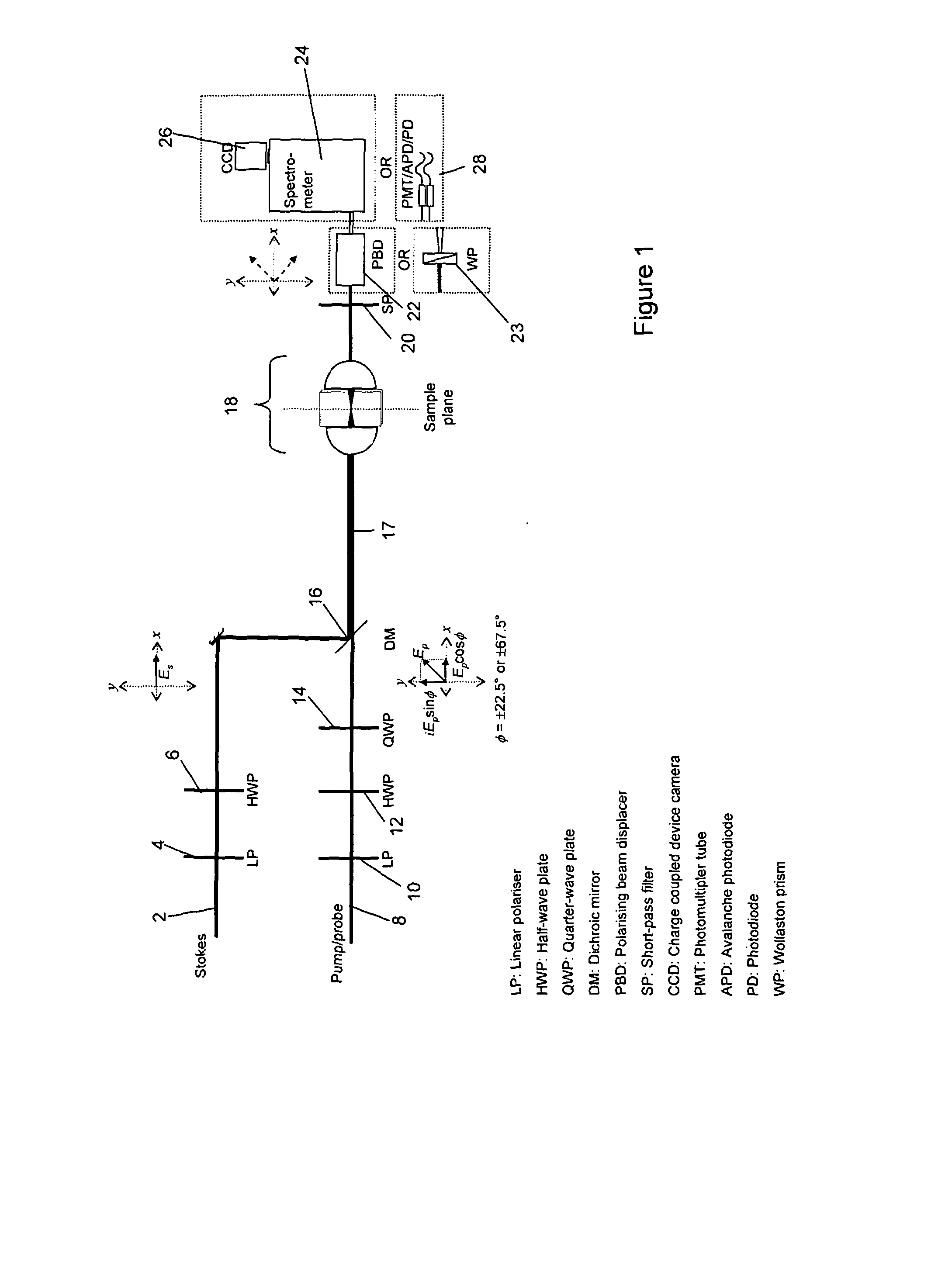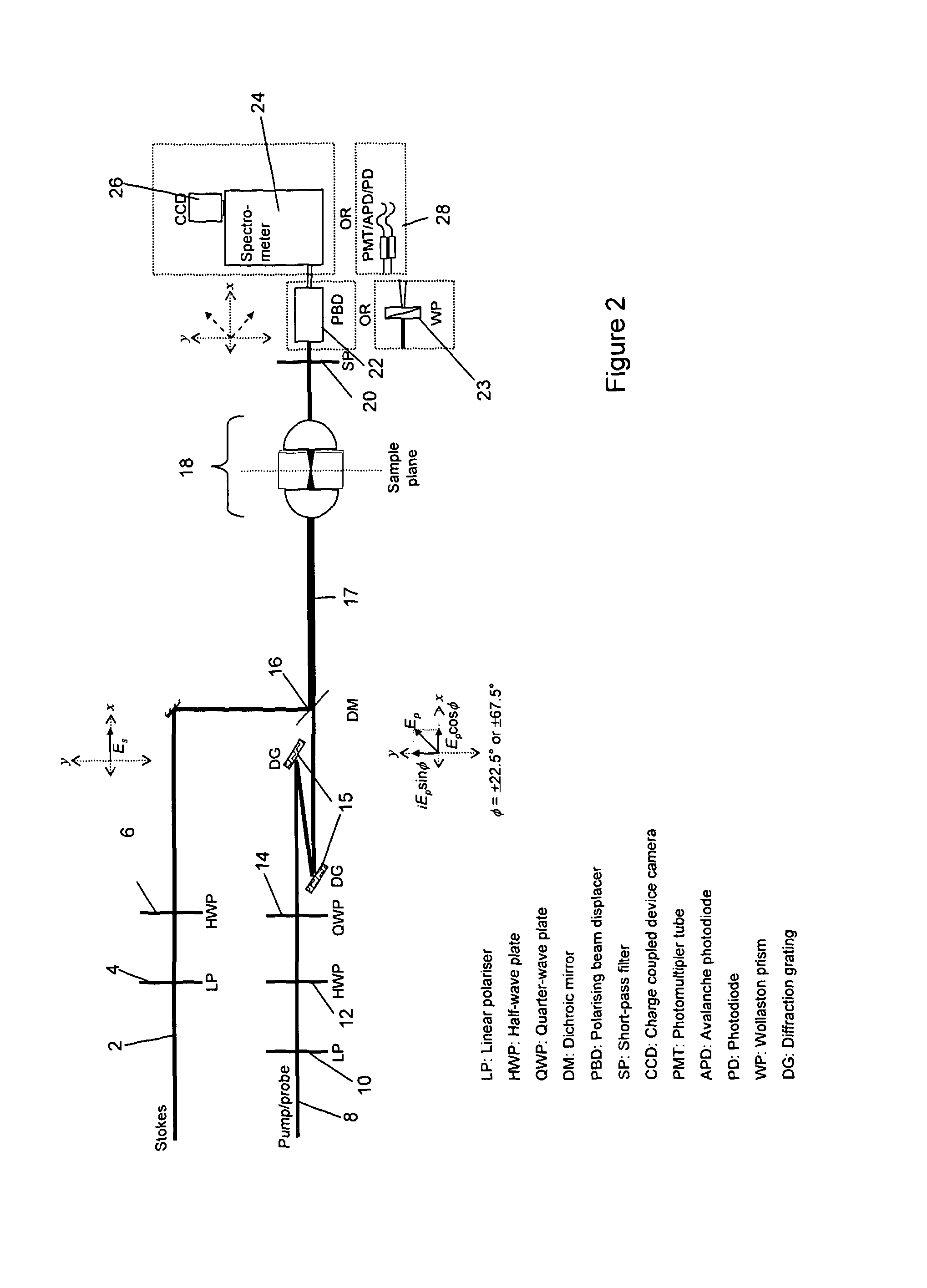Method and apparatus for non-resonant background reduction in coherent Anti-stokes raman scattering (CARS) spectroscopy
a non-resonant background and scattering technology, applied in the field of cars spectroscopy, can solve the problems of low signal level, limited sensitivity, and low signal level of techniques, and achieve the effect of simple and robustness
- Summary
- Abstract
- Description
- Claims
- Application Information
AI Technical Summary
Benefits of technology
Problems solved by technology
Method used
Image
Examples
Embodiment Construction
[0038]The problem that embodiments of the invention solve is the removal of the non-resonant background from CARS signals. They do this through what is essentially an interferometric process. Resonant CARS signals have a real and imaginary component (which is simply a way of saying that one component (real) is generated in phase with the driving fields, while the other (imaginary) is generated in quadrature phase; that is, phase shifted by ¼ wavelength). The spectrum of the resonant part of the real component is ‘dispersive’ (passes through zero on resonance, with odd symmetry about the resonance), and the imaginary component peaks on resonance, with even symmetry. The imaginary component is directly related to the spontaneous Raman spectrum, for which there are already large spectral databases to allow chemical identification. The NRB signal, on the other hand, only has a real component. The component we wish to recover is therefore the imaginary component of the entire CARS signal...
PUM
 Login to view more
Login to view more Abstract
Description
Claims
Application Information
 Login to view more
Login to view more - R&D Engineer
- R&D Manager
- IP Professional
- Industry Leading Data Capabilities
- Powerful AI technology
- Patent DNA Extraction
Browse by: Latest US Patents, China's latest patents, Technical Efficacy Thesaurus, Application Domain, Technology Topic.
© 2024 PatSnap. All rights reserved.Legal|Privacy policy|Modern Slavery Act Transparency Statement|Sitemap



